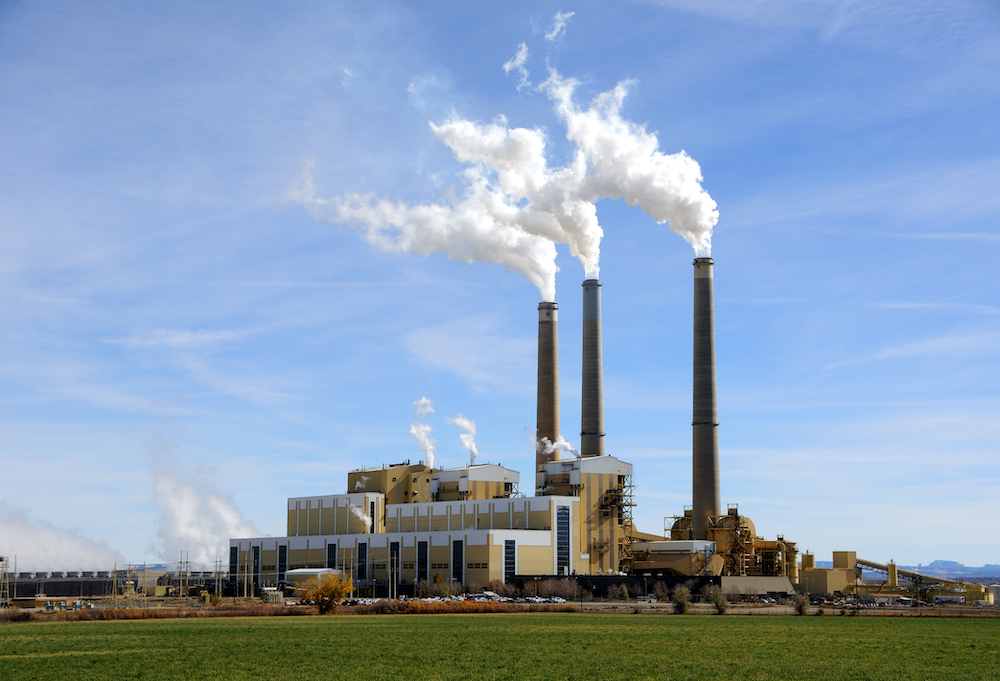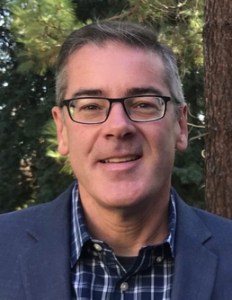A Sponge to Soak Up Carbon Dioxide in the Air
A Q&A with Berkeley Lab scientist Jeffrey Long on a material for capturing CO2

Berkeley Lab is pursuing a portfolio of negative emissions technologies and related research to remove carbon dioxide from the atmosphere. (Credit: Gary Whitton/Shutterstock)
Human activity is now leading to the equivalent of 40 billion tons of carbon dioxide emitted into the atmosphere each year, putting us on track to increase the planet’s temperature by 1.5 degrees Celsius over pre-industrial levels by 2040. According to the Intergovernmental Panel on Climate Change (IPCC), we must limit global warming to 1.5 degrees Celsius to avoid the most dangerous impacts of climate change.
Increasingly, scientists are recognizing that negative emissions technologies (NETs) to remove and sequester carbon dioxide from the atmosphere will be an essential component in the strategy to mitigate climate change. Lawrence Berkeley National Laboratory (Berkeley Lab), a multidisciplinary Department of Energy research lab, is pursuing a portfolio of negative emissions technologies and related research. These range from geological and terrestrial sequestration, to conversion to bioproducts, to thermal reactors for hydrogen fuels.
 A promising technology under development for NETs is carbon capture using a material called a MOF, or metal-organic framework. Jeffrey Long, a senior scientist in Berkeley Lab’s Materials Sciences Division and also a professor in UC Berkeley’s College of Chemistry, has been working with this unique material for a number of years.
A promising technology under development for NETs is carbon capture using a material called a MOF, or metal-organic framework. Jeffrey Long, a senior scientist in Berkeley Lab’s Materials Sciences Division and also a professor in UC Berkeley’s College of Chemistry, has been working with this unique material for a number of years.
Q. What is a MOF and what role can it play in reducing CO2 emissions?
A MOF, or metal-organic framework, is a type of solid material that is highly porous and behaves like a sponge, capable of soaking up vast quantities of a specific gas molecule, such as carbon dioxide. They’ve been around about 20 years, and there’s been an explosion in research over the last decade as scientists are finding more and more practical applications. What’s distinctive about MOFs is that they have extremely high internal surface areas. Just one gram of a MOF, an amount similar to a cube of sugar, can have a surface area greater than a football field. Consequently, if designed properly, a small amount of MOF can remove an enormous amount of CO2 from the exhaust gas produced by fossil fuel combustion.
We made a serendipitous discovery a few years ago that certain MOFs can capture carbon dioxide through an unprecedented switch-like mechanism. We further optimized the material for efficient removal of CO2 from a power plant flue before the gas enters the atmosphere. We showed that the capture and release of carbon dioxide from the MOF could be accomplished using much smaller temperature changes than required for other technologies, giving it a big advantage over conventional ways to capture CO2. (The adsorbed CO2 can then be utilized in other products.) This strategy eliminates the need to divert high-value, high-temperature steam away from power production, avoiding a large increase in the cost of electricity. In the course of these efforts, we also showed that variants of the MOFs could be efficient for the removal of CO2 from other gas mixtures, including biogas, natural gas, and even directly from air.
For direct air capture, MOFs are the best way we have of doing it that I see. For the carbon capture part of BECCS (or bioenergy with carbon capture and storage, an emerging negative emissions technology), where you’re essentially growing trees or crops, combusting them for fuel, then capturing and sequestering that CO2, I think MOFs could also do the capture part better than any other material.
Q. That sounds very promising. What is the status of this technology now? Is it being used commercially?
A startup company called Mosaic Materials (in which I have a financial interest) was formed in 2014 to pursue commercial production of MOFs for various CO2 separation processes. At Berkeley Lab we’re leading a project funded through the National Energy Technology Laboratory (NETL) in which we are working with Mosaic Materials and a Canadian engineering company called Svante to carry out a pilot demonstration for a coal-fired power plant flue gas.
Here, use of the MOF in a unique rotating bed system can achieve quick capture-release cycle times and reduced energy consumption. Ultimately, it is envisioned that widespread commercial deployment of such technology could result in a dramatic reduction in the cost and energy associated with carbon capture, as it necessarily becomes implemented across the globe.
Elsewhere, MOFs are in commercial use for the safe storage of other hazardous gases. For CO2capture, I’d say they are now close to being ready for commercial deployment.
Q. If that is the case, then what further research on MOFs is needed?
We need to lower the cost of direct air capture dramatically. It’s very expensive to do now. There are companies already doing it – they build units with fans blowing air through devices containing porous materials – but the materials in use are not very effective, making the units extremely expensive to operate. The cost of removing CO2 with such a technology is currently on the order of $500 to $1,000 per ton. We need to devise higher performance materials to help get the cost down below $100 per ton.
The main issue behind this high cost is the amount of energy required for regenerating the adsorbent – that is, for releasing the CO2 in pure form so the material can then be used again to capture more CO2. Here, we think the cooperative adsorption mechanism accessible in MOFs could significantly reduce the heat and vacuum requirements for regeneration.
Another consideration, though, is the energy required for blowing air. If you have a stream of air coming in that’s 410 parts per million CO2, one of the difficulties is that most materials might remove a small amount of that and lower the CO2 concentration to, say, 300 ppm, capturing 25% of the CO2. That’s what’s called the capture rate. And then to capture more, you have to basically flow more air through the material to fill it up.
But with a capture rate of, say, 90% you could lower the CO2 concentration to 40 parts per million with a single pass. That means you’re blowing a lot less air for removing the CO2 and therefore saving energy.
One of our research goals is to develop materials that have a high capacity, a high capture rate, fast kinetics for CO2 adsorption, and a low regeneration temperature, while also limiting the co-adsorption of water so that you’re not wasting energy on its desorption if you don’t need to. The kinetics means how quickly the CO2 is taken up by the material.
I think there’s a path to getting to below $100 per ton of CO2 removed from air. There’s still a lot of research needed to get there. We need to really rethink some of the ways the materials are designed and understand how to manipulate things like delta-S (entropy) for CO2 adsorption, so that less heat is required for CO2 release.
About Lawrence Berkeley National Laboratory
Founded in 1931 on the belief that the biggest scientific challenges are best addressed by teams, Lawrence Berkeley National Laboratory and its scientists have been recognized with 14 Nobel Prizes. Today, Berkeley Lab researchers develop sustainable energy and environmental solutions, create useful new materials, advance the frontiers of computing, and probe the mysteries of life, matter, and the universe. Scientists from around the world rely on the Lab’s facilities for their own discovery science. Berkeley Lab is a multiprogram national laboratory, managed by the University of California for the U.S. Department of Energy’s Office of Science.
DOE’s Office of Science is the single largest supporter of basic research in the physical sciences in the United States, and is working to address some of the most pressing challenges of our time.
Source: Berkeley Lab, press release, 2021-02-22.
